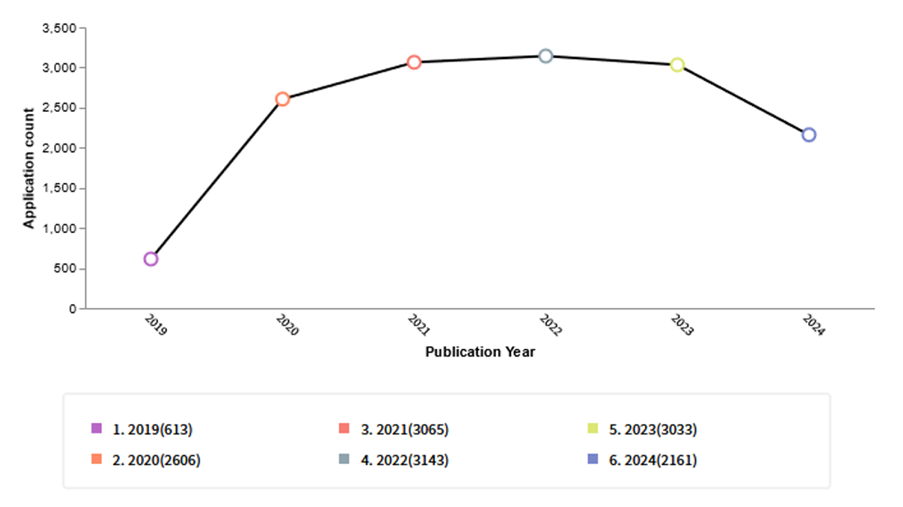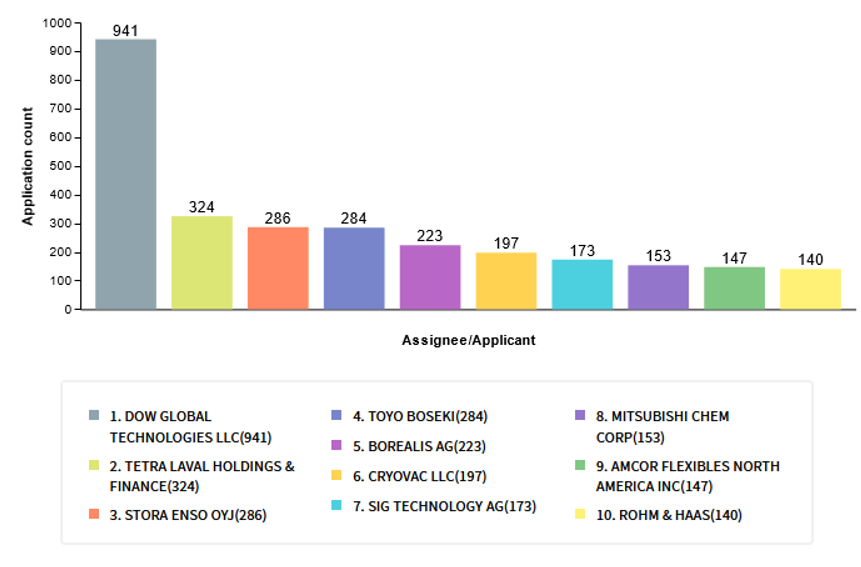The Evolution and Impact of Sustainable Packaging Solutions
Green packaging involves using eco-friendly materials and practices to minimize environmental impact throughout a product’s lifecycle, from production to disposal. It emphasizes waste reduction, resource conservation, and recycling, employing biodegradable, compostable, or renewable materials.
Additionally, it seeks to reduce energy, water, and chemical use during manufacturing and transport. This approach mitigates environmental issues linked to traditional packaging, such as excessive fossil fuel consumption, greenhouse gas emissions, and non-biodegradable waste in landfills.
Need of Sustainable Packaging
Sustainable packaging plays a vital role in reducing reliance on non-renewable resources, decreasing carbon emissions, and minimizing environmental impact through the use of biodegradable, recyclable, and reusable materials. This approach contributes to the conservation of natural resources and the protection of ecosystems.
In 2018, it was estimated that only 23% of total polyethylene (PE) films were sent for recycling, indicating that a significant portion of food packaging ultimately ends up as waste. In 2023, the global volume of flexible packaging reached 29.88 million tons, highlighting the growing demand for packaging solutions.
This demand is particularly exacerbated by the substantial increase in online shopping and e-commerce deliveries, which necessitates high-performance, low-waste packaging solutions.
These trends underscore the critical importance of sustainable packaging in preserving the environment, reducing waste, and conserving energy. As global demand for eco-friendly products continues to rise, companies that invest in sustainable packaging can access new markets and appeal to a broader customer base, including environmentally conscious consumers.
Market Size for Sustainable Packaging
The global market is experiencing growth driven by a shift in consumer preferences towards lighter, more streamlined, and environmentally sustainable packaging solutions.
Additionally, a significant number of companies are integrating sustainable practices as a key aspect of their Corporate Social Responsibility (CSR) initiatives. This includes the implementation of green packaging strategies to diminish their environmental impact and align with consumer expectations for eco-conscious products, thereby stimulating market growth.
Furthermore, continuous advancements in packaging technologies—such as innovations in biodegradable materials, recyclable options, and compostable alternatives—have facilitated the adoption of green packaging by companies, thereby accelerating market expansion.
In addition, stringent environmental regulations enforced by the United States government have increased the demand for alternative packaging materials like aluminium foil, driving the overall market.
Moreover, the rising use of reusable materials for packaging processed and ready-to-eat foods is further contributing to the market’s development.
US Market forecast
The analysis centres on the sustainable packaging market, with 2023 as the base year, covering a historical period from 2018 to 2023, and a forecast from 2024 to 2032. The market size was valued at US$ 70.7 billion in 2023, with a projected increase to US$ 104.3 billion by 2032, reflecting a compound annual growth rate (CAGR) of 4.3% over the forecast period.
The packaging types assessed include recycled content packaging (paper, plastic, metal, glass), reusable packaging (drums, plastic containers), and degradable packaging. The end-use industries covered encompass the food, beverage, healthcare, and personal care sectors, among others.
(https://www.imarcgroup.com/united-states-green-packaging-market)
Global market forecast
The global sustainable packaging market was valued at USD 109.22 billion in 2023 and is anticipated to reach approximately USD 225.78 billion by 2033, with a projected compound annual growth rate (CAGR) of 7.52% over the forecast period from 2024 to 2033.
Role of Patents and Inventions in Sustainable Packaging
Patents and inventions serve as essential catalysts in advancing sustainable packaging, a sector experiencing rapid growth due to increased environmental awareness, regulatory pressures, and shifting consumer expectations. Innovations in this field—ranging from biodegradable materials to energy-efficient manufacturing processes—are pivotal for reducing environmental impact across the packaging lifecycle. By securing intellectual property rights for these innovations, companies can protect their developments, encourage continued research, and incentivize further advancements in eco-friendly packaging.
Patents are beyond protecting individual innovations. It also fosters a global commitment to environmental responsibility. Countries such as China, the United States, and those within Europe are leading in sustainable packaging patent filings, illustrating an international dedication to this cause. As nations strengthen their regulatory frameworks, patents for eco-friendly materials and processes ensure compliance while reducing the risk of future environmental impacts.
Patent Publishing Trends in US

Source: Derwent Innovation
Between 2019 and 2023, U.S. patent applications for sustainable packaging surged fivefold, with 14,621 filings, reflecting substantial growth and innovation in the sector. This increase suggests even more significant global activity, highlighting strong momentum in sustainable packaging patents.
Top Assignees in US

Source: Derwent Innovation
Over the past five years, the highest number of patents related to sustainable packaging has been attributed to DOW Global Technologies, with a total of 941 patents assigned to the company. This notable volume underscores DOW Global Technologies’ leading role and commitment to innovation in the sustainable packaging sector.
Global Patent Publishing Trends

Source: Derwent Innovation
Over the past five years, numerous countries have dedicated significant time and resources to advancing sustainable packaging, resulting in a notable global surge in patent applications. China stands out as the leading nation with the highest number of patent filings, followed by the United States, Europe, Japan, and Korea.
These countries are at the forefront of securing patents in the sustainable packaging sector. This development underscores the considerable market growth and high success rate associated with sustainable packaging, demonstrating a global commitment to environmentally responsible innovation.
Total Filings in USPTO, EPO, JPO, etc. in the last 5 years
In the past five years, the total number of patent filings related to sustainable packaging across various patent offices is as follows:
China (CN): 3,288 filings
United States of America (US): 2,509 filings
European Patent Office (EPO): 1,553 filings
World Intellectual Property Organization (WIPO): 1,296 filings
Japan (JP): 893 filings
Republic of Korea (KR): 526 filings
Source: Derwent Innovation
These figures indicate a significant scale of development occurring within the sustainable packaging industry, reflecting a growing commitment to innovation and environmental responsibility across these key markets.
Notable legal cases within the packaging industry
Analysis of the King’s Hawaiian Sweet Roll Packaging Lawsuit Settlement
The recent settlement of the lawsuit between King’s Hawaiian and Pan-O-Gold Baking Company over intellectual property rights represents a notable development in the packaging industry. This case, centered on protecting King’s Hawaiian’s distinctive orange trade dress, underscores the significant role that unique packaging plays in brand identity and consumer recognition. While the settlement terms remain confidential, Pan-O-Gold has agreed to modify its packaging to avoid further conflict.
Positive Implications
For King’s Hawaiian, this resolution reinforces the company’s dedication to safeguarding its intellectual property. Successfully defending its iconic packaging design fortifies its brand image and enhances consumer trust. This outcome may also deter potential infringement by other companies, helping to maintain King’s Hawaiian’s established market position.
Additionally, the case highlights the importance of protecting intellectual property within the packaging industry, setting a positive precedent for other businesses. Companies may feel more secure investing in distinctive packaging, knowing that legal systems support defending such assets, which could encourage greater innovation and diversity in packaging design.
Potential Challenges
Conversely, this case may present challenges for smaller or regional brands that may unintentionally utilize similar designs. It underscores that even specific design elements, such as colours and patterns, can be subject to trade dress protection. This precedent could lead to more stringent requirements for differentiating packaging from established competitors, which may be financially burdensome for companies with limited resources to defend against or settle such disputes.
Impact on Stakeholders
This settlement serves as a reminder to stakeholders throughout the industry, including retailers, manufacturers, and packaging designers, of the need to exercise heightened diligence in protecting intellectual property. Legal teams may play a more prominent role in the packaging design process, particularly within larger organizations, to prevent potential infringement. For suppliers and packaging designers, the case serves as a prompt to prioritize unique, non-infringing design solutions for their clients.
In sum, the King’s Hawaiian settlement reaffirms the enforceability of trade dress protection and highlights the extensive measures established brands are prepared to take to protect their intellectual property rights.
Conclusion
The sustainable packaging sector is experiencing significant growth, propelled by heightened environmental awareness, technological innovations, and changing consumer preferences. With the U.S. market valued at approximately USD 70.7 billion in 2023 and projected to reach USD 104.3 billion by 2032, and the global market expected to grow from USD 109.22 billion to around USD 225.78 billion by 2033, the demand for eco-friendly packaging solutions is on the rise. Patent activity further reflects this momentum, with a fivefold increase in U.S. applications from 2019 to 2023, led by DOW Global Technologies.
As countries like China, the U.S., and those in Europe ramp up their patent filings, the commitment to sustainable packaging becomes increasingly evident. Regulatory pressures and consumer demand for environmentally conscious products enhance brand reputation and open new market opportunities. The sustainable packaging industry is thus well-positioned for ongoing expansion, driven by innovation and a collective commitment to environmental sustainability, paving the way for a greener future.
At Legal Advantage, we excel in assisting with patent filings and navigating the intricate landscape of intellectual property pertaining to sustainable innovations. Our devoted team is focused on safeguarding your innovations and ensuring their effective contribution to global sustainability initiatives. Through our thorough consultation and strategic patent services, we enable inventors to secure their sustainable inventions, thereby protecting both their intellectual property and the future of our planet.


